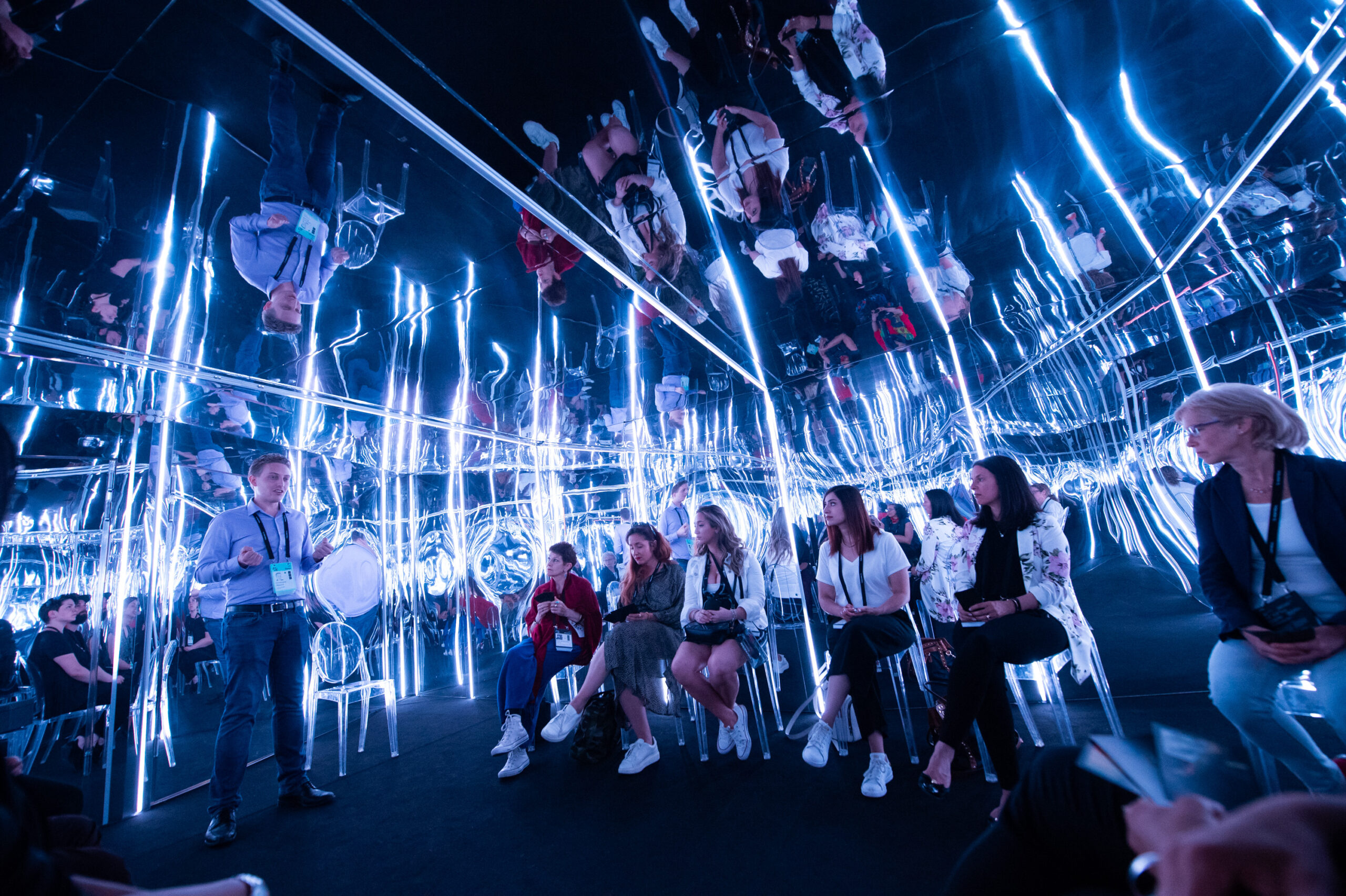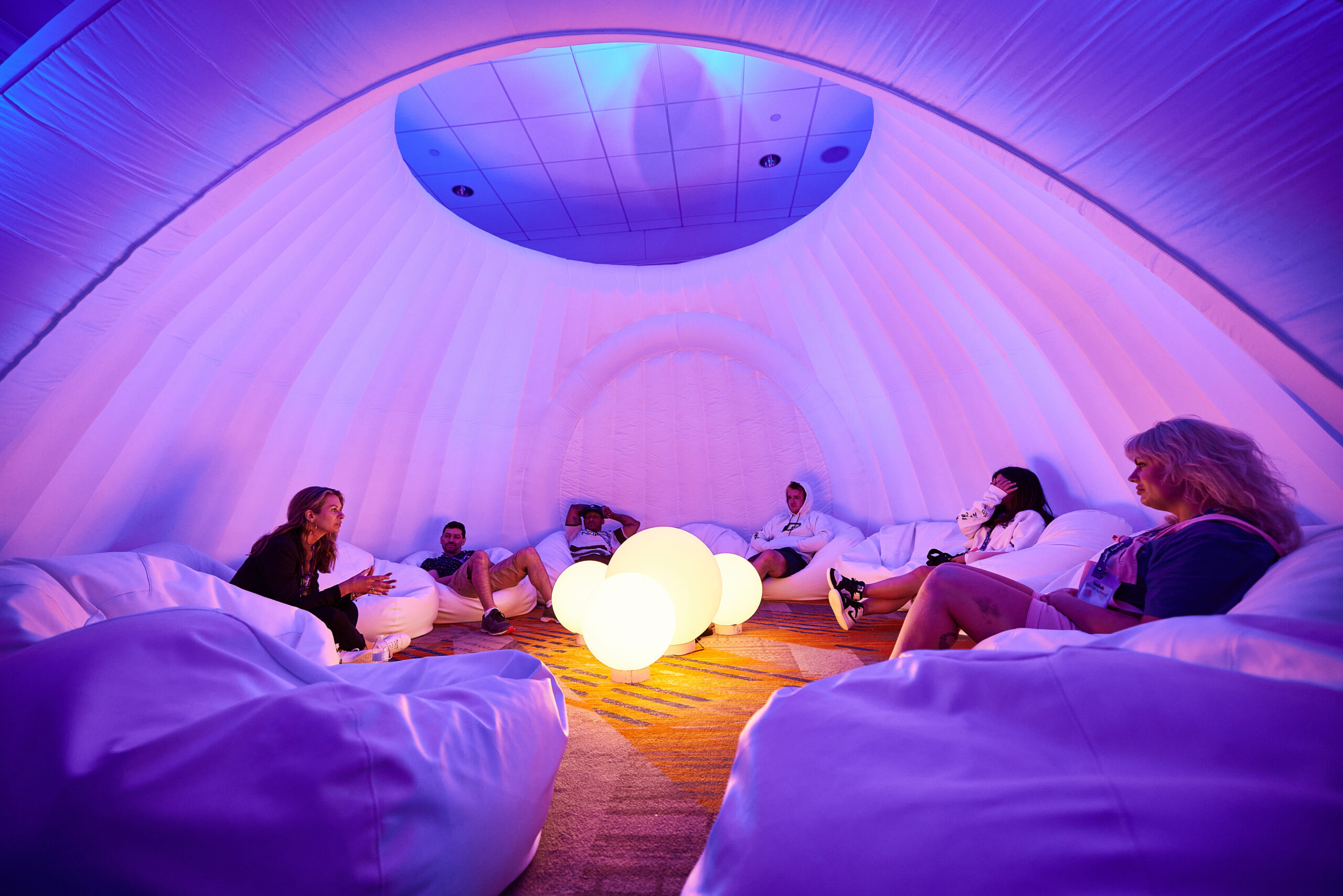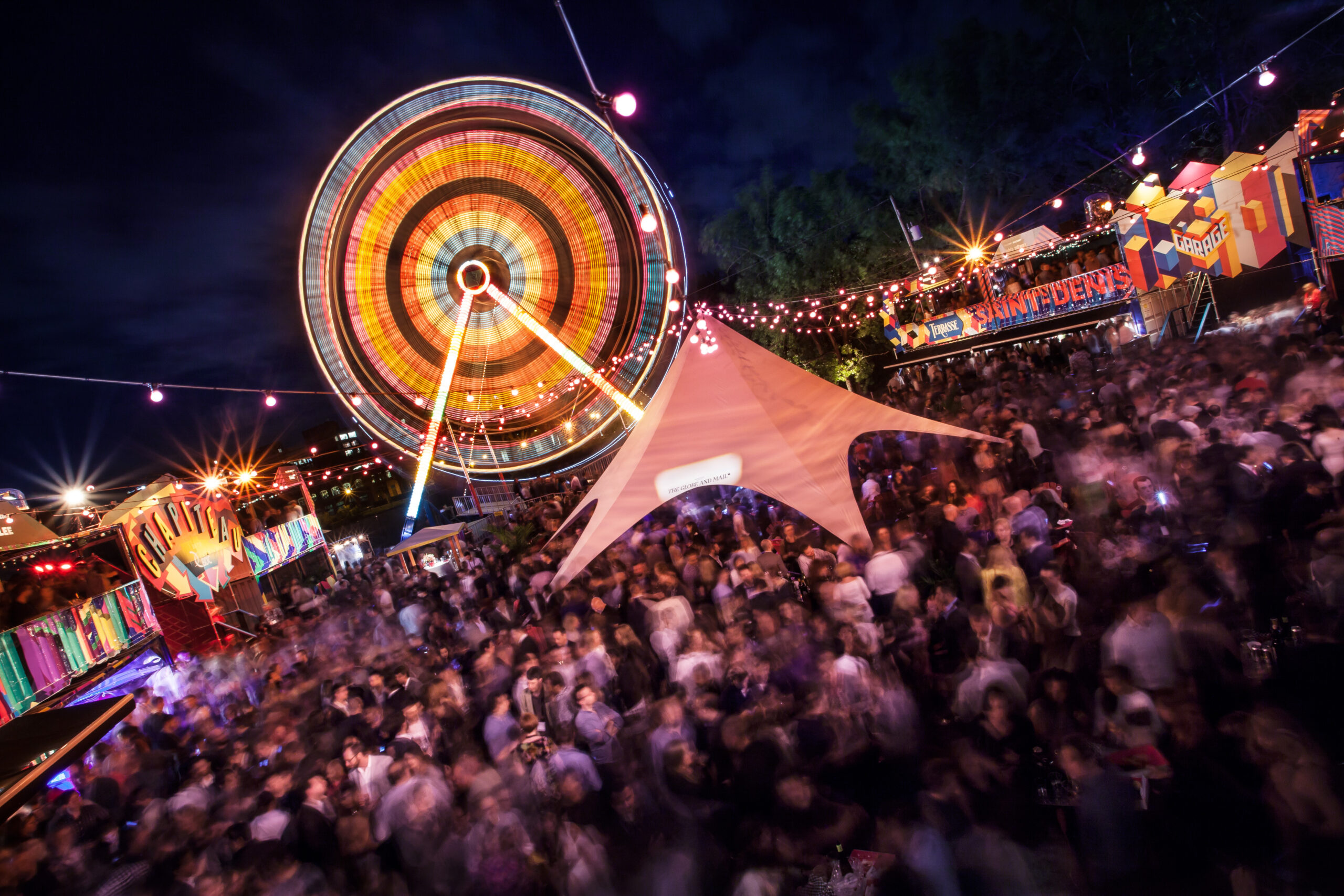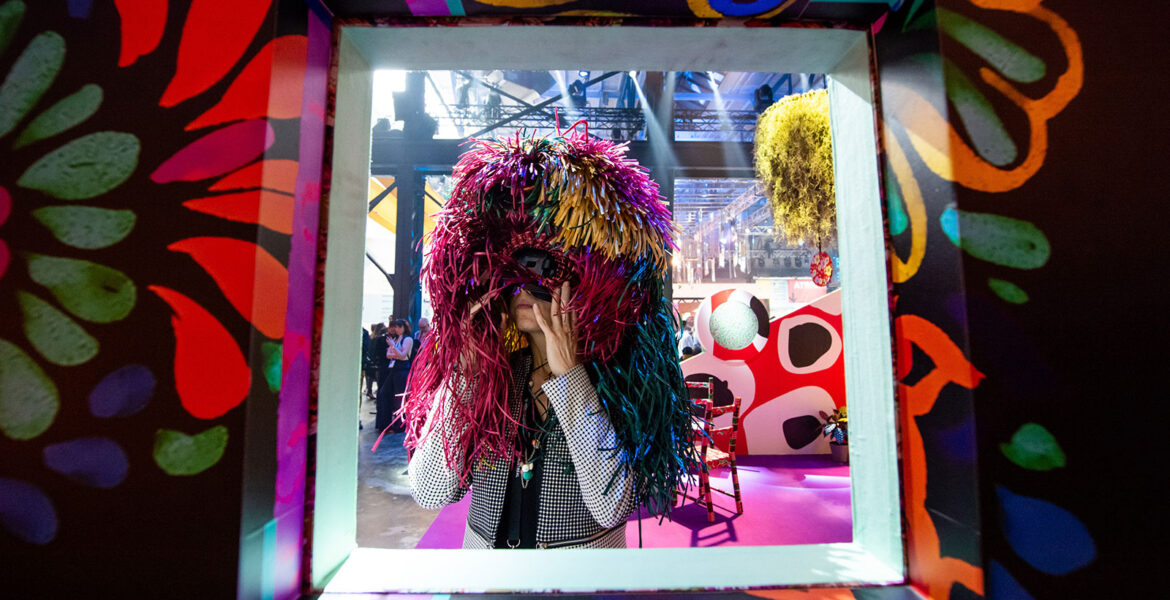Anick Beaulieu, CEO of C2, on how the GenXP model is redefining experiential design by transforming events into meaningful and measureable strategic opportunities.
The experiential gap
 Experiential is no longer the bright-shiny “activation” brands squeeze in with leftover budget. It’s a front-of-deck line item and a core growth engine senior marketers pitch to the CFO with straight faces and seven-figure asks. Why? Because after three years of screen glareand post-Covid, we’ve rediscovered a universal truth: goosebumps close deals. Virtual can stream the keynote, sure, but nothing beats human-to-human voltage in a shared room.
Experiential is no longer the bright-shiny “activation” brands squeeze in with leftover budget. It’s a front-of-deck line item and a core growth engine senior marketers pitch to the CFO with straight faces and seven-figure asks. Why? Because after three years of screen glareand post-Covid, we’ve rediscovered a universal truth: goosebumps close deals. Virtual can stream the keynote, sure, but nothing beats human-to-human voltage in a shared room.
As a result, industry spend is surging as more brands double down on live events. At one end of the spectrum you’ve got beige-carpetand LinkedIn-exchange factories that promise “relationship building” and deliver business-card mulch. At the other, you have life-altering, core-shaking gatherings like the city-wide roar of Formula 1. One sparks a ripple effect of press, partnerships and pipeline. The other sparks…a decent continental breakfast. Same spend, wildly different returns.
That inconsistency is a problem, because money loves certainty. As investment climbs, so do expectations. CMOs are under pressure to prove that every lanyard, LED wall and latte budget ladders up to pipeline, retention or brand fame tall enough to measure. If the impact feels intangible, the dollars boomerang back to programmatic faster than you can say impressions.
What are we missing?
It’s not that marketers lack imagination, skill or intent. The toolkit is overflowing with data dashboards, RFID badges, AI-driven content engines, and production squads who can turn an aircraft hangar into Atlantis before lunch. What the category lacks is a shared framework: an agreed-upon vocabulary for designing, discussing and measuring experiences so they generate value on purpose, not by accident.
Historically, experiential has been a finger-to-the-wind, guts-and-glory domain. Plenty of heroes take a rigorous path, but many more flex their production muscles, shoot for “memorable,” and hope for the best. That sometimes works, yet nobody can explain why it worked or replicate the magic without another spin of the roulette wheel.

How C2 Codified the Magic
That roulette culture is exactly what sparked the creation of C2 Montréal, C2’s flagship event over a decade ago. We were drowning in yawn-inducing lecture halls and transactional trade shows. We wanted a business gathering that was immersive, fabulous and, above all, transformational. Something thatshapes people, brands, culture and the economy all in one swoop. We pulled it off. Attendees left with deals, new ventures, and stories they still dine out on.
But even with an A-team of dream builders, we realized we needed a framework to dissect what worked, repeat it intentionally and, crucially, show our clients the math. So, we reverse-engineered the spark into Generative Experiences (GenXP), a playbook that treats an event like a flywheel instead of a fireworks displaywhile providing value in the moment and momentum afterward.
The rest of this article introduces our GenXP playbook and the five key ingredients that power it, showing how they combine to turn experiential gatherings into momentum machines that generate higher, measurable value. Because if you’re investing seven figures in live experience, it should pay dividends long after the last swag bag hits recycling.
Introducing Generative Experiences
At C2, it’s our conviction that bringing people together must lead to tangible outcomes. It’s conversations that lead to innovation, uncover insights, forge partnerships, and create business ventures, ultimately shaping creativity, culture, and the economy.
So, we set out to define exactly why to ensure that these things happen every time.
Generative Experiences (or GenXP) is our methodology for designing business gatherings where value begins in the moment but builds into momentum that drives tangible, measurable results long after the last handshake or airport Uber.
The major shift? We’re not designing for passive audiences, but for active participants: people who shape the experience and carry its value forward. People who don’t just attend experiences but extend them.
This is a codification of the principles that have powered our work. It is a playbook for those ready to embrace the evolving models of engagement. Whether you design business gatherings, immersive brand experiences, or anything in between, this is your roadmap.
The Five Ingredients
Our playbook lays out five strategic principles for building generative experiences, each one focused on creating conditions for lasting engagement and measurable value. Five design ingredients that createinfinite outcomes.
World Building: Make a Scene Worth Stepping Into
World building is about treating your experience like a fully formed universe. Think storytelling, architecture, lighting, textures, and social rules.
We’re not talking themes here. We’re talking about systems.
This is a foundational principle in everything from video games to immersive theater. When a world has internal logic (when the visuals, interactions, and participation rules all flow from the same source) people stop asking “What am I supposed to do?” and start doing. They explore. They connect. They create. They invent.
If you want your audience to go from passive to generative, start by designing a world they’ll want to live in. Give them logic. Give them lore. Then stand back and let them build something inside it.
Effective world building invites participants to inhabit an experience rather than merely engage with it. When people grasp the underlying principles, values, and “rules” of this world, they develop the confidence to explore, interact, and ultimately create within its framework.
If you want your audience to go from passive to generative, start by designing a world they’ll want to live in. Give them logic. Give them lore. Then stand back and let them build something inside it.
Transmedia Layering: Meet People Where They Are
Your audience doesn’t live in a single channel. Neither should your experience.
Transmedia layering means building across the physical, digital, and emotional dimensions where your audience is actively engaged. This way, the experience isn’t limited to one moment or medium. It shows up everywhere it counts.
Each touchpoint, before, during, and after, is meticulously designed to give people a new way in, a new reason to care, or a new way to contribute.
Think audio. Think movement. Think memes, rituals, physical objects, private messages, unexpected invitations. It’s about format. It’s about timing, texture, and tone.
When it’s all working, the experience expands. It gets stickier. It meets people where they are and grows with them.
Layering like this makes the experience bigger than the event itself. It stretches the timeline. It embeds into behavior. It keeps the story alive.
Build for how people actually move through the world. Give them multiple ways in and new reasons to stay.
When the message adapts to the medium and the moment, you turn presence into participation and participation into momentum.
Unpredictability & Surprise: Surprise Is a Design Tool
When the audience can guess the outcome, they check out.
True engagement happens in the space between expectation and discovery.
Don’t misunderstand. This doesn’t mean randomness, though we like a little randomness and chaos too. It means building enough flex into your system that unexpected, spontaneous moments of magical surprise can actually land. Unpredictability keeps the brain curious. It makes people feel something powerful.

Designers who understand this build systems with adaptive logic. Decision trees. Contextual triggers. Feedback loops. All of it working together to create space for delightfully unexpected moments.
This approach draws from improvisational theater, procedural game design, and the chaos of live performance. It’s how you keep the experience distinct. It’s how you shift from one-size-fits-all to unique moments that wouldn’t exist outside the experience.
Surprise doesn’t always have to be a spectacle. It can be a well-placed twist. A break in the pattern. A moment that bends the rules just enough to spark awe.
If you want people to stay present, make the experience unpredictable. Set the conditions. Leave room for magic. Let the moment surprise everyone, including you.

Meaningful Participation: Put Your Audience in the Driver’s Seat
Putting your audience at the helm is a powerful design decision. When you give people real roles and real influence, the experience gains dimension. You’re transferring power, intentionally, with just the right balance of structure and flexibility, so participants navigate with confidence and shape the story naturally.
Design the system so participation is baked in. Let every choice, every tap, every idea bend the experience in some way. Build feedback loops. Drop decision points. Set the stage, then let your audience shift the story.
Participant agency is the new power move in experience design. If you want people to bring their full energy, give them something real to influence. Show them the levers. Let them build. Let them shape their own experience.
The most powerful experiences are built with shared authorship. They’re powered by players, not spectators. When people know their input matters and when they see the ripple effect, they lean in harder.
Think game design. Think improv. Think collective intelligence with real consequences.
Participant agency is the new power move in experience design. If you want people to bring their full energy, give them something real to influence. Show them the levers. Let them build. Let them shape their own experience.
Living IP: The New Frontier of Fandom
Your brand is bigger than a product, a service, or an event. Your brand is a universe. And when it’s attractive and meaningful, people will want in.
Fandom doesn’t happen by accident. It’s not a byproduct. It’s an outcome you need to intentionally design for. When you give people the tools to participate (symbols, rituals, inside language) they start to see themselves inside the brand, engage with it, and extend it.
Much like an IPO democratizes a business, a living brand democratizes identity. It invites your community to co-create and amplify the expression of the brand, turning engagement into a shared, evolving narrative.
A living brand responds. It grows through interaction. Feedback loops. Cultural cues. Tangible signals that show the brand is listening and moving with the people who are part of it.
Build the universe of your brand. Make space for others to shape it. The more they bring to it, the more it becomes theirs. And the more it matters to them.
Make It Yours
This is a living, breathing playbook for those who see experience as a core growth strategy that generates tangible value for brands.
Now, we’re setting it free. It’s an open-source strategy, ready for you to shape, remix, and evolve. Take what works. Adapt what doesn’t. Build something we haven’t even imagined yet.
What we’ve started is just the beginning.







